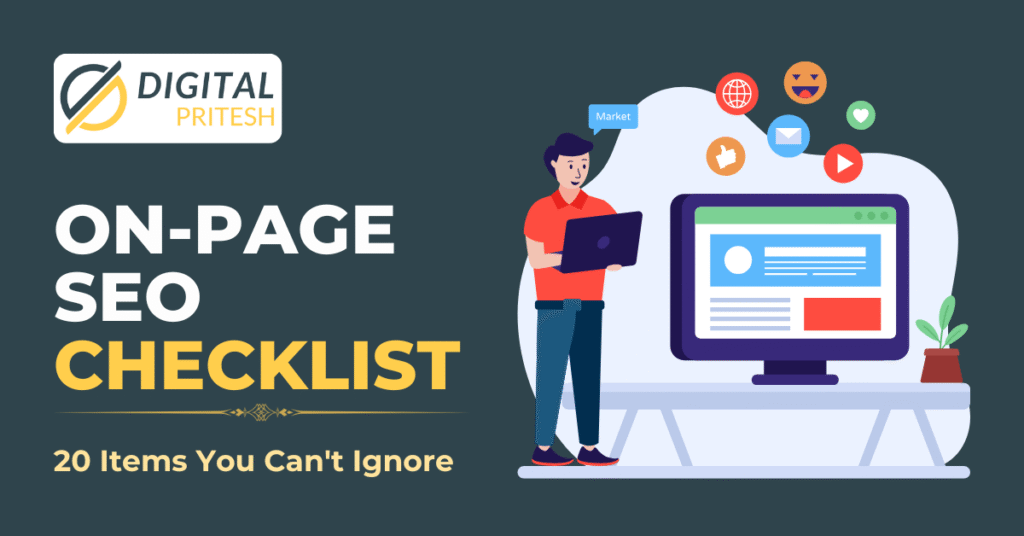
If you want your website to rank higher on Google and attract more organic traffic, you need to master On-Page SEO. Search engine algorithms keep evolving, but the fundamentals of on-page optimization remain essential for long-term success.
In this guide, we’ll walk through 20 actionable tips to help you optimize your pages, boost visibility, and deliver an excellent user experience.
With more than 60% of web traffic coming from mobile devices, Google uses mobile-first indexing. Use a responsive design that adapts to all screen sizes. Tools like Google’s Mobile-Friendly Test can help you identify and fix issues.
Shorter URLs are easier for users to read and remember, and they perform better in search rankings. Include your primary keyword and avoid unnecessary numbers or symbols.
Example:
✅ /on-page-seo-checklist instead of ❌ /article?id=456
Internal links help search engines understand your site structure and distribute link equity. Use relevant anchor text and link to high-quality, related pages to improve SEO and user navigation.
Break your content into sections with clear headings. Your H1 should contain your main keyword, while H2s and H3s should support related keywords. This improves readability and SEO.
Your page title is one of the most important on-page SEO elements. Include your primary keyword naturally and keep titles under 60 characters to avoid truncation in search results.
Large image files slow down your site, affecting rankings. Compress images without losing quality and use descriptive alt text for better accessibility and SEO.
Avoid duplicate content and focus on delivering valuable, original information. Use a clear structure, bullet points, and concise sentences to improve engagement.
Search engines pay special attention to the first paragraph of your content. Include your primary keyword naturally within the first 100 words to signal topic relevance.
A fast-loading site improves user experience and boosts rankings. Use Google PageSpeed Insights or GTmetrix to analyze your site’s performance and follow suggestions to optimize speed.
Linking to authoritative websites adds credibility and helps search engines understand your content. Use relevant and trustworthy sources only.
A high CTR signals to Google that your page is valuable. Use engaging titles, descriptive meta descriptions, and rich snippets to increase clicks from search results.
Schema markup helps search engines better understand your content and display rich results. Implement structured data using tools like Google’s Structured Data Markup Helper.
Duplicate content can confuse search engines and hurt rankings. Use canonical tags and ensure each page has unique value.
Featured snippets appear at the top of search results and can drive significant traffic. Answer questions directly, use bullet points, and keep answers concise.
Social sharing buttons make it easy for users to share your content, increasing reach and potential backlinks.
Meta descriptions influence CTR. Keep them under 160 characters, include your primary keyword, and write them in a way that entices clicks.
With smart assistants on the rise, voice search is becoming crucial. Focus on conversational keywords and answer-based content to capture voice queries.
Great SEO isn’t just about keywords — it’s about keeping visitors happy. Ensure intuitive navigation, readable fonts, and a clean layout.
Outdated content can harm rankings. Review old posts, update stats, and refresh internal links to keep them relevant.
Broken links frustrate users and hurt SEO. Use tools like Ahrefs or Screaming Frog to detect and fix broken links regularly.
Q1: What is the most important factor in On-Page SEO?
While all elements matter, high-quality, relevant content optimized with the right keywords and good user experience is the most critical factor for ranking success.
Q2: How often should I update my website’s content?
Aim to review and update important pages every 3-6 months. Keep statistics, links, and information fresh to maintain relevance.
Q3: Do I need to add my keyword multiple times to rank?
No. Overusing keywords can lead to keyword stuffing penalties. Use your primary keyword naturally and focus on semantic variations.
Q4: How do I optimize for voice search?
Use conversational language, answer-based content, and long-tail keywords that reflect how people speak rather than type.
Q5: Does adding more outbound links improve rankings?
Outbound links to relevant, high-quality sources can improve your content’s credibility, but they should be used sparingly and only where relevant.
Q6: How do I measure the success of On-Page SEO?
Track metrics like organic traffic, bounce rate, average session duration, CTR, and keyword rankings using tools like Google Analytics and Google Search Console.
On-page SEO is the backbone of your website’s ranking potential. By implementing this 20-point checklist and following best practices, you’ll create a website that search engines love and visitors trust. Consistency is key — keep optimizing, testing, and improving for the best results.
on-page SEO checklist keywords, SEO optimization tips, mobile-friendly SEO, SEO best practices, URL optimization, internal linking strategy, header tag SEO, image optimization for SEO, unique content SEO, keyword placement tips, page speed SEO, outbound link SEO, CTR improvement, schema markup SEO, avoid duplicate content, featured snippets SEO, social sharing SEO, meta description optimization, voice search SEO, user experience SEO, update old content SEO, fix broken links SEO

Digital Pritesh
Typically replies within minutes
Any questions related to The Ultimate On-Page SEO Checklist for 2025: 20 Tips to Skyrocket Your Rankings?
WhatsApp Us
Online | Privacy policy
WhatsApp us